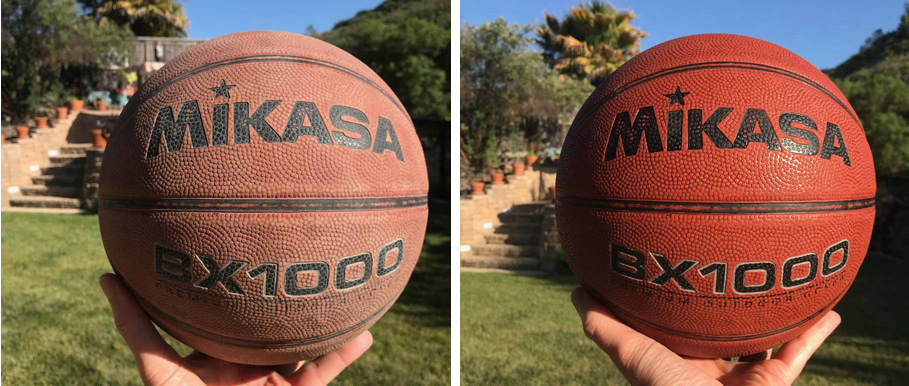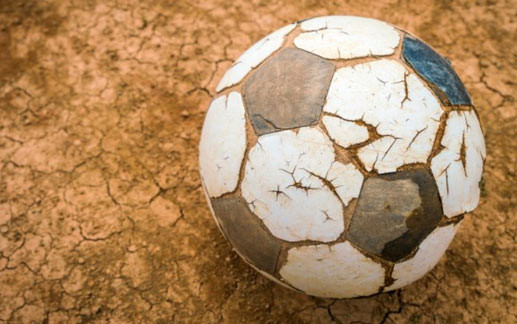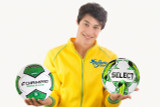How to Keep your Balls from Getting Dry, Shriveled and Cracked
It’s an embarrassing problem that you’ll hear talked about in gyms and locker rooms across the nation, and one that seems to get worse over time. “What in the world is happening to my balls?”
If you’ve been playing sports long enough, you too have probably noticed how your football, basketball, soccer ball, water polo ball, volleyball or even your playground ball aren’t quite the same as the glorious day you first bought them. Once bright, soft feeling and full of bounce, your ball is now a mere shadow of itself. Once the pride of the playground, your ball now has a hard, dry, faded and cracked cover with a bladder that doesn’t quite hold air as well as it once did.
It’s so bad that it makes you want to hide your balls in shame. What is going on here? Following is the short explanation, with 10 simple steps on how you can get the most out of your brand new sports balls and keep them looking and performing at their best. First though, let’s review some quick points on how inflatable balls are constructed.
What Your Balls are Made of
Inflatable balls, be they a football, soccer ball, basketball, playground ball or others, share many of the same components. At their core they feature either a natural latex rubber bladder or a synthetic butyl rubber bladder to hold air, nylon windings or fabric layers to assist in retaining the balls’ shape and provide added performance and cushioning, an air valve to allow for inflation and finally a top cover which provides performance, grip, durability and looks.
Some balls, such as soccer balls or footballs, may feature glued or stitched-on panels, or in the case of rubber balls and many basketballs, feature a one-piece, seamless cover that does not require either.
Depending on the price, quality and intended purpose, the ball’s cover may be constructed from leather, composite leather (a mix of leather scraps and polyurethane), synthetic leather or rubber. And while each material has their own strengths and weaknesses, they all have the same set of enemies.
Your Ball’s Natural Enemies
We all love nature – a warm, sunny day, fresh air, or a good old fashioned rainstorm, but your balls may feel differently about it. The sun’s UV rays cause a breakdown of materials known as UV degradation. You may notice this effect on your balls as a faded cover with a chalky white surface, the loss of strength, bounce and flexibility, or even drying and cracking along the surface.
Heat, when combined with oxygen and ozone, act together as antioxidants that further crack the ball’s surface - even getting inside and damaging your ball’s inner bladder. Because the bladders are made of latex rubber, or more likely a synthetic rubber (butyl), they naturally absorb oxygen and ozone as they age, and the reaction is accelerated by heat. In time, the bladders begin to vulcanize (harden), lose their flexibility and form small cracks and tears. The balls eventually lose the ability to reliably hold air pressure until one day the bladder bursts.
Water in the form of rainfall, perspiration, swimming pools, wet grass and mud puddles, not only get absorbed by the balls’ covers, but also slowly decay stitching and rot the ball from the inside out. Essential oils that give the ball its grip and feel get stripped away from the cover, leaving the ball slick or hard feeling.
Mankind – Be Kind to Your Balls
Aside from nature, mankind can be a ball’s best friend or worst enemy. Many-a-time I have left my balls outside in the elements, or thrown them into the backseat of my hot, stuffy car - baking my balls in direct sunlight. At times I have sat on my balls, using them as a convenient chair.
Other times I have carelessly thrown my balls against rough concrete walls, skipped them across hot asphalt and rough gravel, or worst of all, over-inflated them, causing them to look like misshapen watermelons rather than a beautiful round globe. Where does the abuse end!
Even Old Balls Can Look and Feel Like New with a Little TLC
The two year old rubber basketball below was faded and had a dry, hard cover. After two minutes of scrubbing under warm water with the rough side of a kitchen sponge and mild soap, it not only looked newer but regained much of the color and soft grip it had lost over the years.

10 Simple Solutions to Keeping your Balls at Their Best
So now that we know the causes of premature ball damage, let’s look at 10 simple ways we can keep our balls shiny, bouncy and performing their best.
- 1. Keep your balls clean: After use, wipe your balls down with a soft cloth. Clean off any salty perspiration, moisture or dirt to keep the essential oils from getting stripped away. Only use mild soap or warm water, as harsh detergents may strip away the oils as well.
- 2. Store your balls in a dry, cool place: Keep your ball out of the elements, direct sunlight and away from moisture and heat. That means keeping them out of the back of hot cars for prolonged periods of time.
- 3. Use a ball bag: A simple ball bag will protect your balls from the damaging rays of the sun, excess heat, rain and even ozone while not in use. A ventilated ball bag will also allow for wet balls to dry while being stored inside.
- 4. Dry your wet balls: If you can’t keep your ball dry during use (a water polo ball for example), make sure you dry your balls before putting them away. Wet balls can get rotten seams, lose their oils or cause glued-on panels to delaminate.
- 5. Don’t stand or sit on your balls: Excess pressure can break down and tear outer panels, stretch or rip seams, or even burst the bladder.
- 6. Use the ball only as intended: A playground ball is not a soccer ball and will quickly lose its shape if kicked or sat on. A basketball is a poor substitute for a volleyball and may hurt someone. Do not use an indoor ball outdoors, as it will wear out more quickly and may absorb unwanted moisture.
- 7. Avoid rough surfaces as much as possible: Hot asphalt, concrete driveways and gravel roads are tough on a ball’s cover – aside from causing premature wear, they can cause tears, abrasions and popping. Avoid them as much as you can.
- 8. Always inflate and keep your balls to the manufacturer’s suggested levels: This is a biggie. Nothing can destroy a ball and cause it to lose its shape faster than over-inflation. Use an air pressure gauge to make sure the ball is inflated to the manufacturer’s suggested air pressure (PSI) which is normally printed on the ball’s cover near the air valve. Under-inflated balls do not perform as well as properly inflated ones.
- 9. Always moisten the inflating needle before inserting it into the ball: Use a drop of silicon oil or silicon lubricating spray to help with needle insertion. This will prevent the accidental pushing of the valve into the ball, ruining it forever.
- 10. Last but not least – USE YOUR BALLS: Your balls want to be used. Just like the tires on a car that has been in storage, balls lose their flexibility if not used for long periods of time. Rubber that gets used regularly will retain its flexibility longer than neglected rubber, so remember to use them before you lose them!
While every inflatable sports ball has a shelf life and will one day wear out and no longer perform at its best, these 10 simple, practical steps will help you get the most out of your purchase, and be the envy of the playground as well.
Stay healthy, play fair and enjoy the game!
Jason Hatch
President
Athletic Stuff

“Taking Your Game to a Higher Level”
Toll Free (877) 406-0607
Recent Posts
-
The Power of Not Giving Up: Why Perseverance Changes Everything
There’s something undeniably powerful about a person who refuses to give up. In a world t …May 15th 2025 -
How to Choose a Basketball: The Ultimate Guide for Every Player
Choosing the right basketball might seem simple, but it can significantly impact your game. Whether …Apr 23rd 2025 -
How to Choose a Soccer Ball
Choosing the right soccer ball is essential for coaches and players of all skill levels, from casua …Jun 11th 2023




